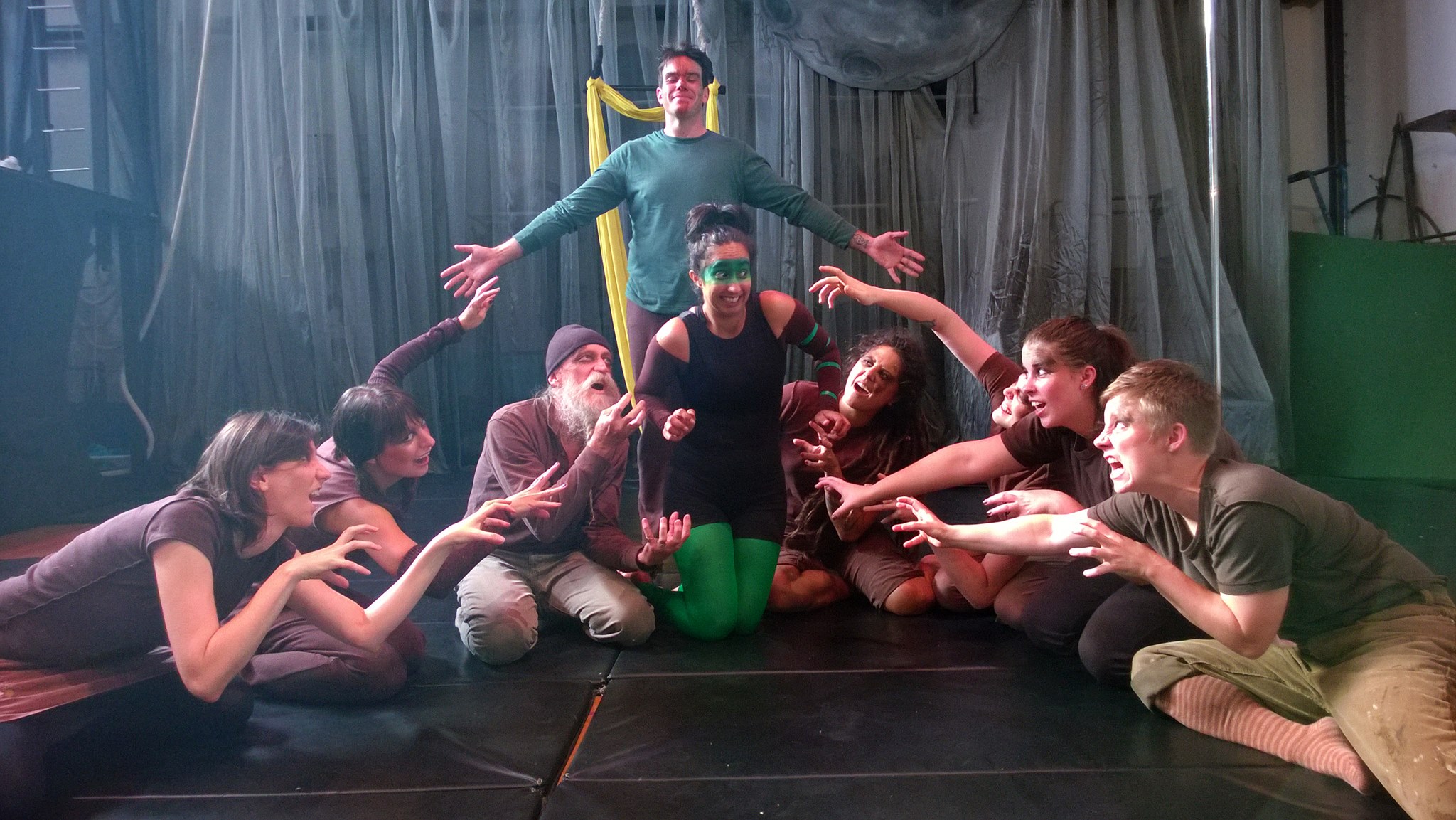Uma Nagendra, winner of the Dance Your Ph.D. Contest: “Trying to put your research in dance form can be a very valuable exercise.”
One of the greatest—and craziest—science communication events during the year is the Dance Your Ph.D. contest. We are happy to present an interview with the winner of this year, Uma Nagendra from University of Georgia.
Plant-soil feedbacks after severe tornado damage: Dance Your PhD 2014 from atinytornado on Vimeo.
 Tell us a little about your research and your interest for trapeze acrobatics and dance.
Tell us a little about your research and your interest for trapeze acrobatics and dance.
I study natural disturbances—events such as tornadoes and hurricanes—and the effects they have on temperate forests. I’m particularly interested in what ecological processes govern the regrowth of these forests. After a tornado blows through a forest, the environment is temporarily but drastically changed. These abrupt changes in light, heat, and moisture can have lasting effects on which species return to the forest, as well as how they interact.
For my dissertation project, I am focusing on how changes to the soil after a tornado could alter the relationships that soil organisms have with tree seedlings. These plant-soil relationships have been widely studied in greenhouses or in intact ecosystems that aren’t experiencing active change—in many forests, it appears that soil organisms may be partly responsible for maintaining high levels of biodiversity. No one has yet looked at how the natural cycle of disturbance and regrowth might affect this pattern. Since we’re expecting more fires, stronger hurricanes, and changes in tornado patterns in coming decades, our research can’t ignore the influences of natural disturbances.
I started taking trapeze classes at Canopy Studio in Athens, GA about two years ago. I first learned about it when I saw a performance by another graduate student in my department. In Athens, at least, a lot of scientists are taking on aerial dance. One of my first instructors was a researcher in the genetics department. I was hooked on aerial dance from the beginning, for lots of reasons. It helps ease out the kinks from a day at the desk or in the field; it forces you to think differently about space and movement; it’s a challenge, both physically and creatively.
Why should the Dance Your Ph.D. award concern the young scientist?
Traditional ways of communicating science (conferences, articles, journals) don’t reach a very wide audience, and are often inaccessible to non-specialists. The Dance Your PhD contest is one way to think creatively about how to convey the main points of your research to a very broad audience. A lot of complex ideas are easier to understand and remember if presented visually and dynamically.
Even if you’re not a dance enthusiast, trying to put your research in dance form can be a very valuable exercise. It forces you to distill everything you’ve been working on into a few key concepts. Translating from data to dance means focusing on the overall patterns, the most important players, and how they interact– that’s what your audience really wants to know anyway.
Give three pieces of advice to the person who wants to participate in the Dance Your Ph.D contest!
1. Start early!
Planning takes a long time– more so than practicing the dance itself. I started thinking about the concept for the dance almost a year in advance, and worked on choreography for months before we even had a practice or rehearsal. Especially if you’re working with a large crew, the more organized you have your thoughts and plans, the more smoothly everything will go. Even if your execution is perfect, it’s not worth nearly as much as a great concept.
2. Get others involved–collaborate!
One of the best parts of this whole experience was bringing together dancers and researchers. Most of the dancers (on trapezes) had a limited science background, and most of the researchers (soil organisms) had very little dance experience. Bringing these two groups together made the whole experience so much more worthwhile– everybody contributed something from their own experience, and I believe everyone gained something as well.
3. Have fun!
If you and your crew are enjoying the dance, it will show up in the video. I went into this project for the fun of it, to try something new, and basically have a good time rolling around on the floor with my friends. Even without the contest aspect, the finished video is a great thing to post on your research website or show to your family and friends when they ask about your work.
Links
- Uma’s personal website (which in itself is very impressing!): umanagendra.wix.com/umanagendra
- The department’s webpage: plantbio.uga.edu
- The trapeze studio: http://canopystudio.org/
- Claire Price of Crastina receives outreach award from Royal Society of Biology - October 25, 2020
- Agile Science student project at Brussels Engineering School ECAM: “We can’t wait to try it again!” - August 28, 2020
- Create an infographic in the Lifeology SciArt Infographic Challenge - June 16, 2020
- Adam Ruben – The scientist that teaches undergraduate students comedy - March 27, 2020
- Sam Gregson, Bad Boy of Science: “Comedy helps to bridge the gap” - March 10, 2020
- The Coolest Science Merchandise of 2019 - December 16, 2019
- Science Media Centre (UK) offers guide on dealing with online harassment in academia - November 26, 2019
- Agile project management taught to students and researchers at Karolinska Institutet - September 20, 2019
- Stefan Jansson: Improve your credibility! (Crastina Column, September 2019) - September 6, 2019
- The People’s Poet: Silke Kramprich, tech communicator - August 31, 2019




Trackbacks & Pingbacks
[…] The winner of the 2014 Dance Your Ph.D was Uma Nagendra. […]
Leave a Reply
Want to join the discussion?Feel free to contribute!